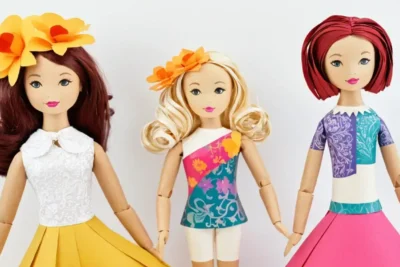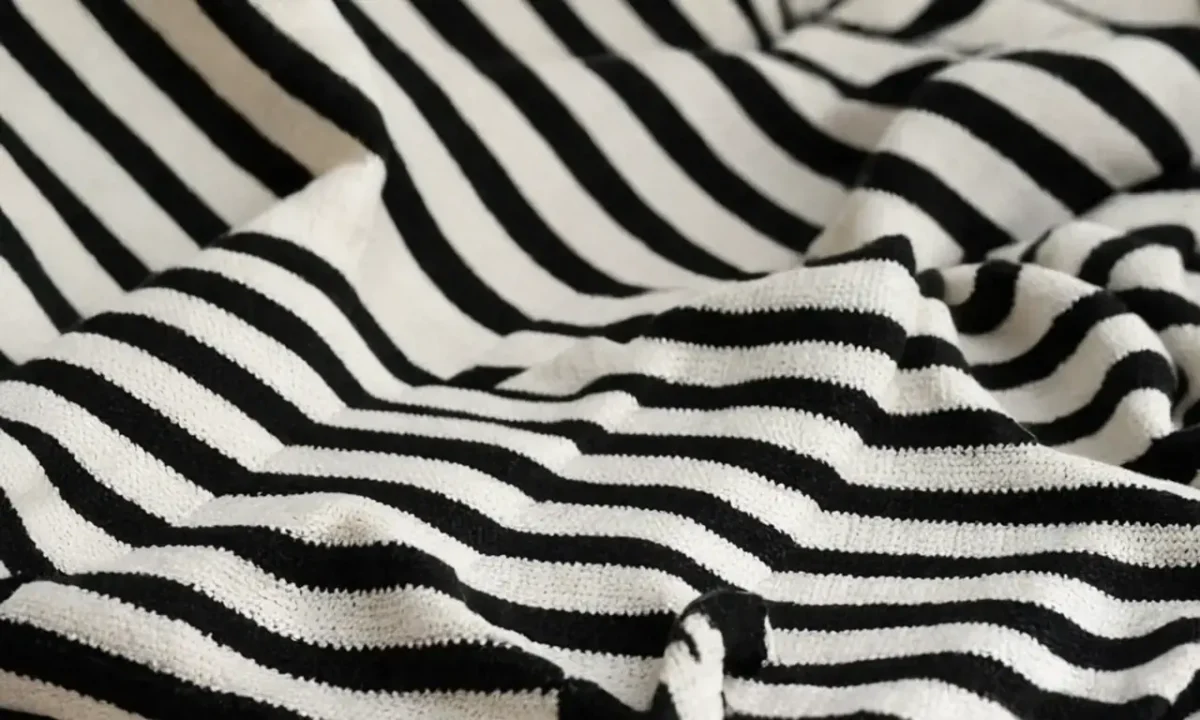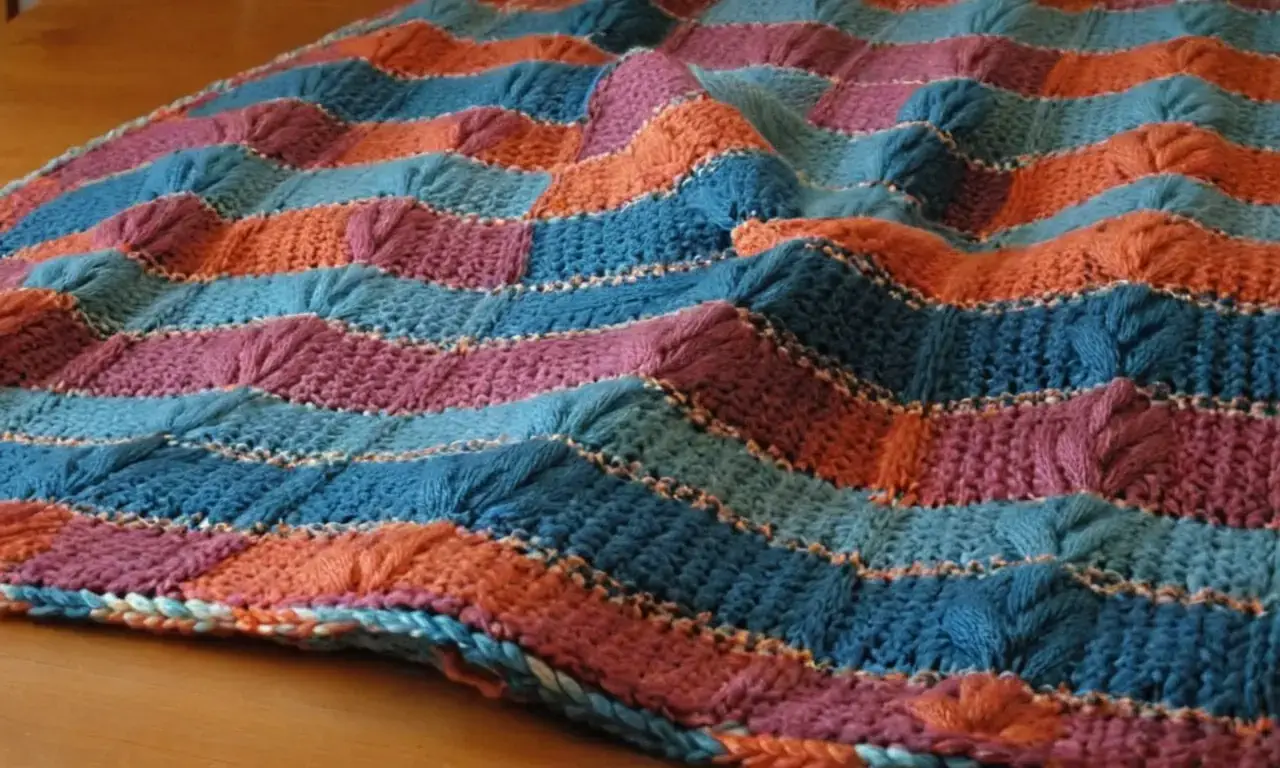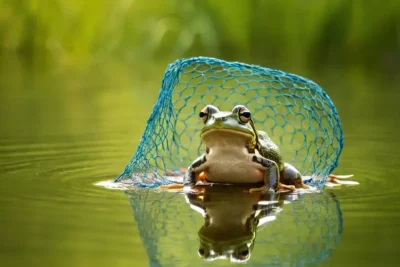
Contrasting Slip-Stitch Baby Blanket Pattern

The contrasting slip-stitch baby blanket pattern is a timeless and sophisticated design that offers a unique blend of style and functionality. This knitting project is perfect for parents-to-be who want to gift their little one with a cozy, handmade blanket that not only provides warmth but also serves as a beautiful keepsake. The contrasting color scheme adds an extra layer of visual appeal, making this blanket stand out in any nursery.
The beauty of this pattern lies in its simplicity and versatility. It's ideal for knitters of all skill levels, from beginners to experienced crafters. With just two colors, you can create a stunning piece that will be cherished for years to come. The slip-stitch technique used here allows for easy color changes without the need to carry yarn along, making it a great choice for those who want to experiment with different hues.
Pattern Overview
The contrasting slip-stitch baby blanket pattern is designed to create a beautiful and cozy blanket that measures approximately 42x40 inches (106.5x101.5cm). This size makes it perfect for a standard crib or as a decorative piece in any nursery. The pattern uses soft sport weight yarn, which provides the ideal balance of warmth and lightness for baby's first blankets.
The design features a crisp, contrasting color scheme that adds depth to the blanket. By alternating between two colors, you'll create a visually appealing effect that will catch the eye. This pattern is not only aesthetically pleasing but also easy to work with, making it an excellent choice for those who want to explore their knitting skills without feeling overwhelmed.
Yarn Requirements
To start your project, you'll need soft sport weight yarn in two contrasting colors. The recommended yarn weight ensures that the blanket remains lightweight and breathable while still providing adequate warmth for baby. Choose a color combination that you love, as this will be the first thing you see when gazing at the finished blanket.
For this pattern, we recommend using approximately 300-400 yards of each color, depending on how tightly or loosely you knit. This yarn amount should give you enough material to complete the entire project without running out. Make sure to check your yarn label for specific yardage recommendations and adjust accordingly.
Gauge Information
The gauge for this pattern is crucial in ensuring that your blanket turns out the right size. To achieve the correct gauge, cast on 216 stitches with color B (or your chosen contrasting color) and measure 4 inches (10cm) in pattern. This will give you a total of 22 stitches and 31 rows per inch. If your gauge is off, it may affect the final measurements of your blanket.
To ensure accuracy, always check your gauge before starting any knitting project. You can do this by swatching with the yarn and needles specified in the pattern. If necessary, adjust your needle size to achieve the correct gauge. This step might seem tedious, but it's essential for a successful outcome.
Knitting Instructions

The contrasting slip-stitch baby blanket pattern begins with casting on 216 stitches using color B. From there, you'll alternate between knitting and purling rows in each color, creating a beautiful contrast effect. The pattern is worked in rows, making it easy to manage the yarn changes without having to carry them along.
To start, cast on 216 stitches with color B. Knit one row, then purl one row using color A (or your chosen main color). Continue alternating between these two colors until you reach a total of about 36.5 inches (92.5 cm) in length. This will give you the desired size for the blanket.
Border Details
The border of this baby blanket is made by picking up stitches along the edges and working a series of knit and purl rows to create a ruffle effect. To do this, pick up one stitch at each edge of the blanket, then work in pattern until you have completed the desired number of rows.
For the final row, bind off loosely in pattern using color B. This will ensure that your border is secure and visually appealing. After binding off, weave in all yarn ends to complete the project. The ruffle effect adds a lovely finishing touch to the blanket, making it even more special for baby's first blankets.
Tips and Variations
One of the best things about this pattern is its flexibility. If you want to add some extra flair, consider adding a simple border or a decorative stitch at the beginning or end of each row. This can give your blanket an extra layer of personality without overwhelming the design.
Another great tip is to experiment with different yarn weights and colors. While the recommended yarn weight provides a lovely balance between warmth and lightness, you might want to try using thicker or thinner yarns for a unique look. Just remember to adjust your gauge accordingly if you change yarn weights.
Troubleshooting
If you encounter any issues during your knitting journey, don't panic! The most common problem is usually related to gauge discrepancies. If your blanket seems too small or too large, check your gauge and adjust your needle size as needed.
Another issue might be with the color changes. Make sure to carry yarn along correctly when changing colors, and if you're unsure about how to do this, consider swatching first to get a feel for it. Lastly, if you find that your stitches are uneven or your tension is off, try relaxing your knitting style and focusing on maintaining an even stitch count.
Finished Measurements
The finished measurements of the contrasting slip-stitch baby blanket pattern should be approximately 42x40 inches (106.5x101.5cm). This size makes it perfect for a standard crib or as a decorative piece in any nursery. If you find that your gauge is off, you might need to adjust your needle size accordingly.
To ensure accuracy, always measure your work regularly and make adjustments as needed. Remember, the finished measurements are crucial for creating a blanket that fits perfectly into its intended use.
Skill Level
This pattern is suitable for knitters of all skill levels, from beginners to experienced crafters. The slip-stitch technique used here is straightforward and easy to follow, making it an excellent choice for those who want to explore their knitting skills without feeling overwhelmed.
However, if you're new to knitting, it's always a good idea to practice the basic stitches before starting this project. This will help you build confidence in your abilities and ensure that you can complete the pattern successfully.
Color Scheme Options
One of the most exciting aspects of this pattern is the color scheme options available. You can choose any two colors that complement each other, creating a unique and personalized look for baby's blanket. Consider using soft pastels, bright primaries, or even neutral tones like beige and gray to create a soothing atmosphere.
Remember, the color combination you choose will be the first thing you see when gazing at the finished blanket, so have fun with it! You can also experiment with different yarn weights and textures to add another layer of depth to your design.
Baby Blanket Size
The baby blanket size is one of the most important considerations for this pattern. The recommended size of 42x40 inches (106.5x101.5cm) makes it perfect for a standard crib or as a decorative piece in any nursery. However, if you want to create a smaller or larger blanket, simply adjust your needle size and yarn accordingly.
Keep in mind that the gauge will affect the final measurements of your blanket, so make sure to check your gauge regularly throughout the project. This way, you can ensure that your finished blanket is the right size for its intended use.
Conclusion
The contrasting slip-stitch baby blanket pattern offers a beautiful and unique design that's perfect for any nursery or as a gift for a new parent. With its easy-to-follow instructions and flexible color scheme options, this pattern is suitable for knitters of all skill levels.
Remember to check your gauge regularly, experiment with different yarn weights and colors, and don't hesitate to ask for help if you encounter any issues during the knitting process. Happy knitting!
Leave a Reply



Related Links